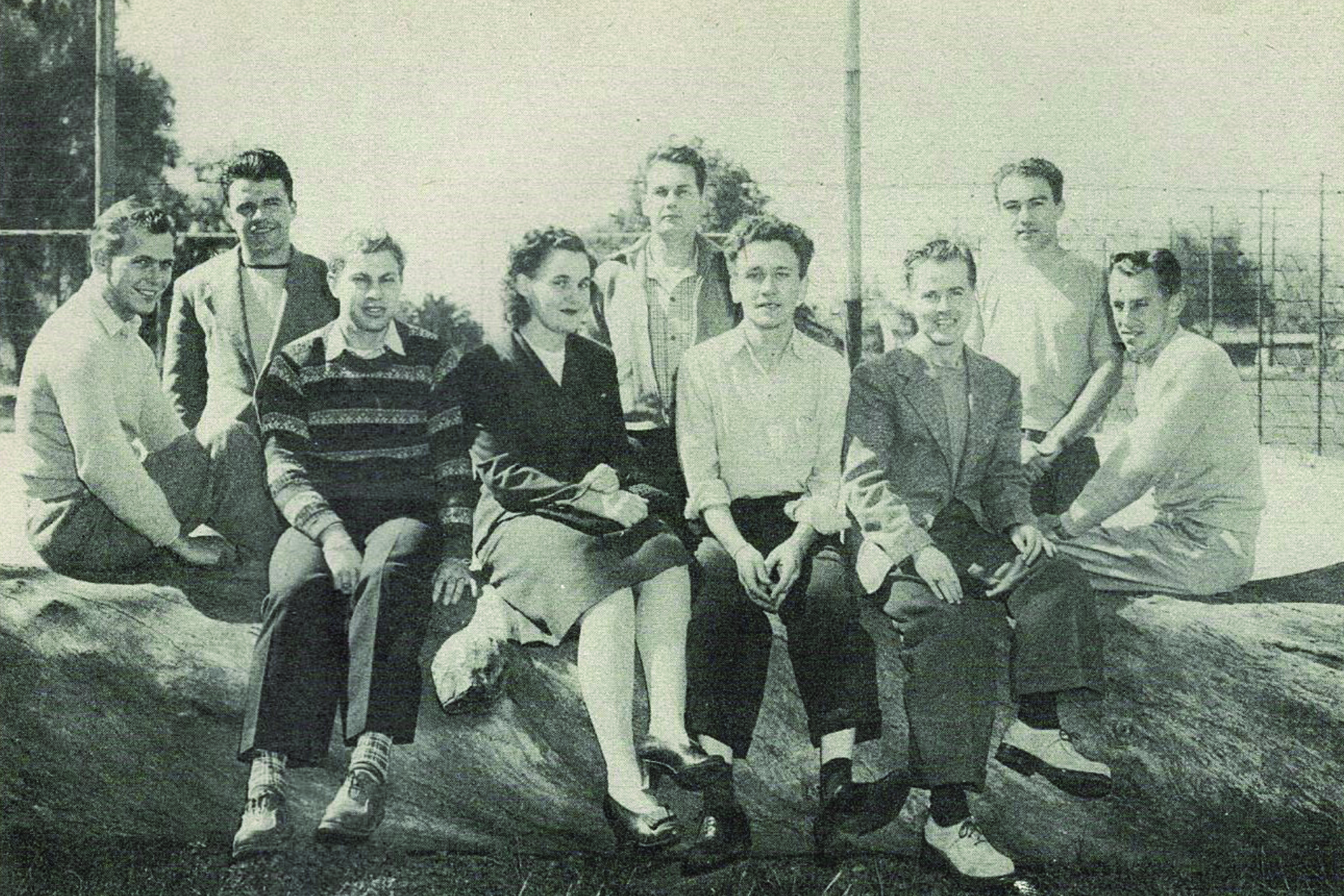La Verne College Goes to War
Students responded to the effects of World War II with resiliency, and the global conflict created a commitment to educating veterans within the university community that continues to today.
June 6, 2022
By December 1941, when the United States joined World War II, few students, professors, or staff members at what was then called La Verne College were surprised that the conflict would have an impact on their lives and institution.
The war posed an ethical conundrum for students. Members of the Church of the Brethren, a nonviolent Christian denomination, played a pivotal role in the founding and early years of the college. At the heart of the Brethren faith is a commitment to pacifism, nonviolence, and non-participation in military conflict.
A generation earlier, during World War I, Jesse Brandt, a Brethren student who had taken classes at La Verne, was drafted but refused to serve in the military. After temporary incarceration in Alcatraz, he worked in an army hospital in Washington. By the time the US entered World War II, Brandt had become a faculty member and administrator at the college. He offered counsel to pacifist students who wanted to avoid military service but still support the war effort.
During World War II, no students from La Verne College were jailed as Brandt had been. Taking the advice of the Brethren and other pacifist denominations, the US government established the Civilian Public Service program. As part of this organization, students from La Verne College performed forestry and conservation work in California and the Pacific Northwest. Although these students had to temporarily pause their educational pursuits, working with Civilian Public Service allowed them to live out their faith’s pacifist creed.
Other students did join the armed forces, serving in a variety of capacities in the Army, Navy, and Army Air Force. From radarmen in the Pacific theater to infantrymen in Europe, students from La Verne College supported the war effort in many ways. Five students died in the conflict, and shortly after the war were honored by the dedication of a memorial drinking fountain that now stands outside Founders Hall.
World War II transformed life on the home front. The most visible impact on the college was the disappearance of male students. This caused a collective sigh among the female population.
As a dirge from the early 1940s lamented, “Of all sad words of tongue and pen, the saddest of these – there are no men.”
Despite their colorful lament, female students thrived at La Verne College during the war. They studied under blackout conditions, turning their lights out at dusk to avoid attracting enemy aircraft.
Lena Ott Coffman, a student in the early 1940s, once had to write a paper for a class late at night. She sequestered herself with a typewriter in a closet, closed the door, turned on the light bulb, and completed her assignment. Female students took control of the associated student body during the war, even assuming its presidency.
After the war, students from across the world attended the college. By the 1960s, the Campus Times student newspaper regularly featured columns by international students. Following in the footsteps of conscientious objectors, numerous graduates entered Brethren Volunteer Service and, later, International Voluntary Services, working on educational and community development projects worldwide.
The most consequential outcome of the war was La Verne College’s commitment to educating veterans. In 1944, the US Congress passed the GI Bill, which funded education for veterans. La Verne College worked closely with the Department of Veterans Affairs to enroll male and female veterans as early as the mid-1940s. Quonset huts for veteran students and their families appeared north of Third Street, within sight of Founders Hall. Educating and housing veteran students paved the way for the university’s Sara and Michael Abraham Center for Veteran Student Success, which now provides services for hundreds of active military personnel, veterans, and their family members.
Balancing tradition with the need for innovation allowed La Verne to weather the storm of the 1940s. That same Leopard spirit exhibited during the COVID-19 pandemic has helped the University of La Verne survive these turbulent times and move forward stronger than ever.
